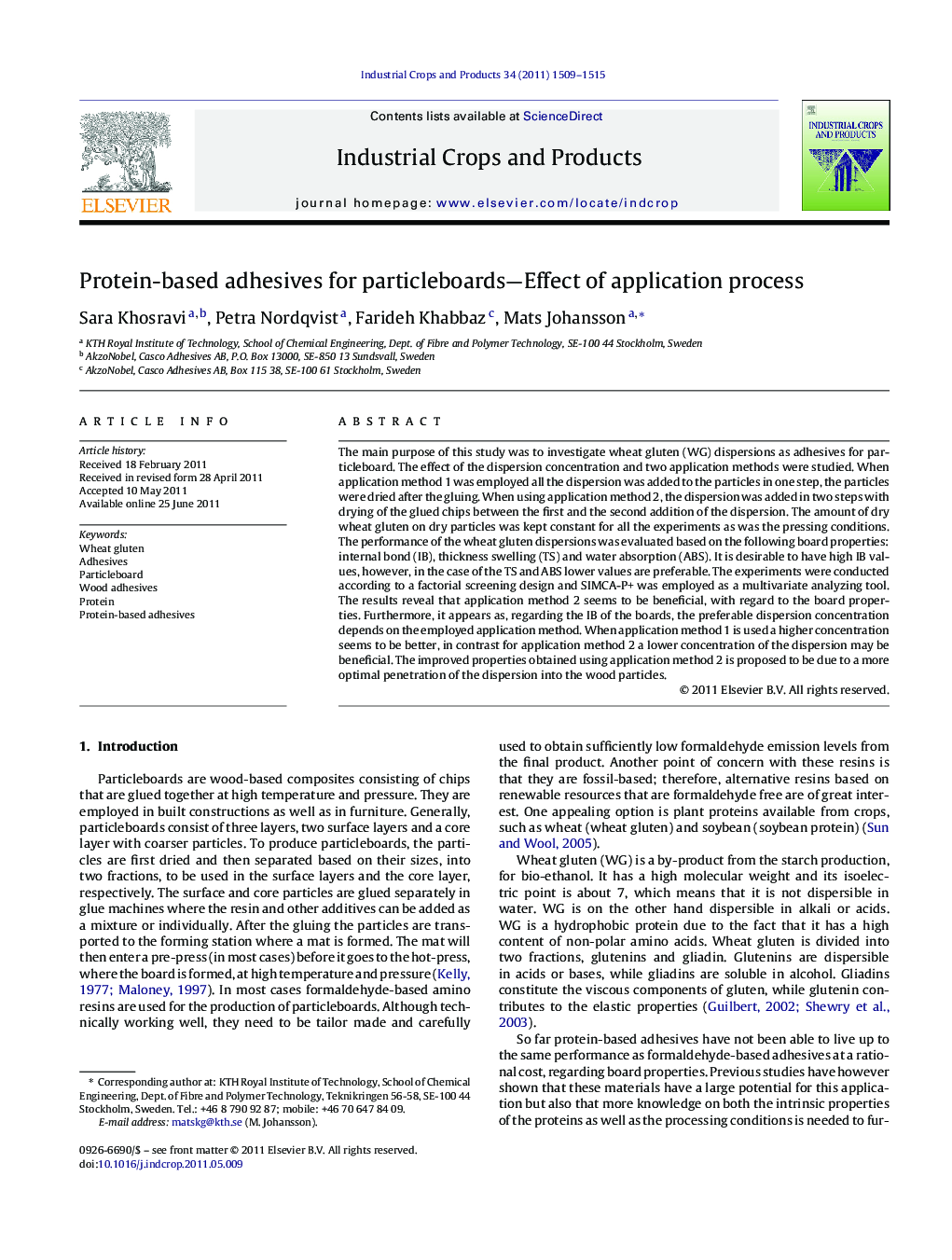| Article ID | Journal | Published Year | Pages | File Type |
|---|---|---|---|---|
| 4514499 | Industrial Crops and Products | 2011 | 7 Pages |
The main purpose of this study was to investigate wheat gluten (WG) dispersions as adhesives for particleboard. The effect of the dispersion concentration and two application methods were studied. When application method 1 was employed all the dispersion was added to the particles in one step, the particles were dried after the gluing. When using application method 2, the dispersion was added in two steps with drying of the glued chips between the first and the second addition of the dispersion. The amount of dry wheat gluten on dry particles was kept constant for all the experiments as was the pressing conditions. The performance of the wheat gluten dispersions was evaluated based on the following board properties: internal bond (IB), thickness swelling (TS) and water absorption (ABS). It is desirable to have high IB values, however, in the case of the TS and ABS lower values are preferable. The experiments were conducted according to a factorial screening design and SIMCA-P+ was employed as a multivariate analyzing tool. The results reveal that application method 2 seems to be beneficial, with regard to the board properties. Furthermore, it appears as, regarding the IB of the boards, the preferable dispersion concentration depends on the employed application method. When application method 1 is used a higher concentration seems to be better, in contrast for application method 2 a lower concentration of the dispersion may be beneficial. The improved properties obtained using application method 2 is proposed to be due to a more optimal penetration of the dispersion into the wood particles.
► The gluing process of the particles is a significant factor for the board properties. ► The two step gluing process is beneficial compared with a one step process. ► The penetration pattern of the dispersions is important for its adhesive properties. ► The optimal dispersion concentration may depend on the employed gluing process. ► The amount of moisture and how it is present influences the board properties.
